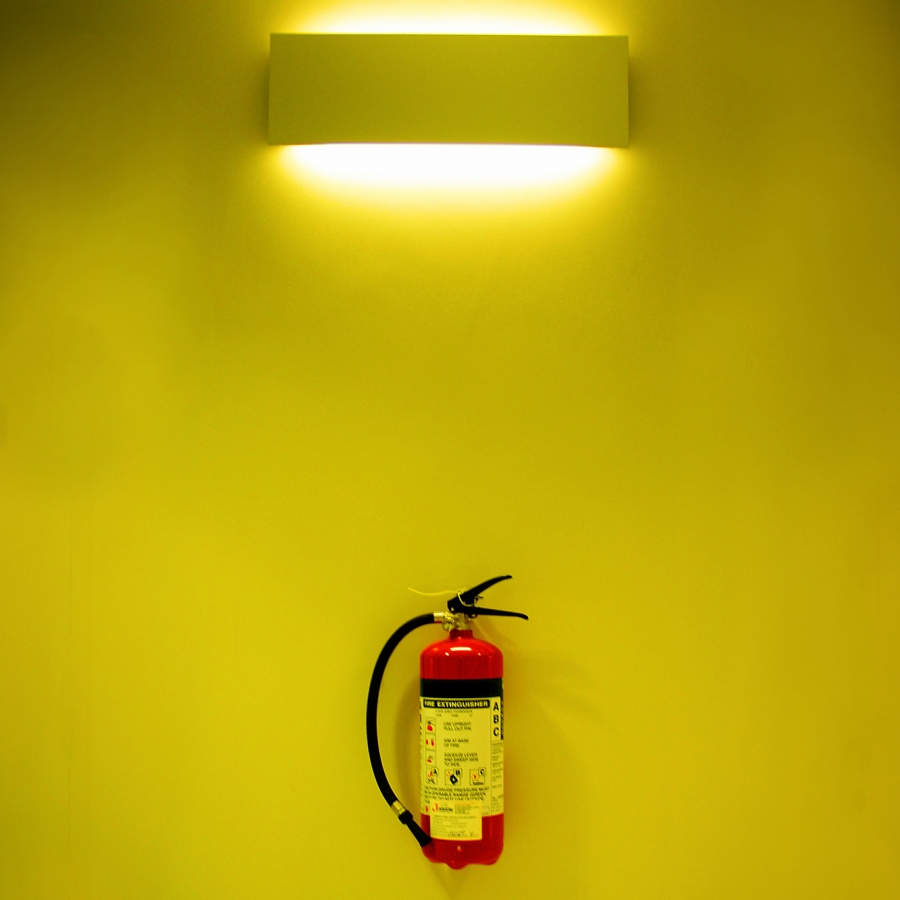Firestopping
Firestopping seals and protects openings and joints in fire rated wall, floor and ceiling assemblies. It is a term used in the construction industry that includes several different components. These components make up what is known as a Passive Fire Protection (PFP) system. PFP are one of three systems that make up building fire safety; Active Fire Protection (AFP) and Fire Prevention are the other two systems. When there is an unprotected opening in a fire rated wall, floor, and/or ceiling assembly, the PFP system becomes compromised, allowing smoke, poisonous gases and fire to spread. Due to the fact that any number of building materials can penetrate a fire rated assembly, including electrical, telecommunications, mechanical, plumbing and structural elements, there are a variety of firestopping materials specifically designed for each application.

Topic Summary
Firestopping was first used in the United States on combat ships in the 1960’s. Steel tubes were installed in the walls and floors of the ship, allowing conduits to pass through. The annular space was then stuffed with a non-burning material, preventing the spread of fire and smoke between the different compartments. By the mid 1970’s, large companies, mostly electrical conduit manufacturers who wanted to expand their product lines, began producing firestopping materials. As the use of firestopping in the construction and building industry started to increase, other manufacturers began to enter the marketplace. In November 1980, after the MGM Grand Hotel fire in Las Vegas, NV, major reforms in fire safety guidelines and life safety codes were set in motion. The ensuing investigation found several causes for the spread of fire and smoke, including unprotected openings in the ventilation shafts, which allowed smoke and poisonous gases to spread to higher floors.
Fire protection engineers typically categorize PFP into four distinct areas of defense. The first area is structural protection. The second area addresses the need to contain the fire, and/or slow its spread, through the use of fire rated wall, floor and ceiling assemblies, commonly referred to as compartmentation. Rated assemblies become extremely important elements of fire and life safety design when they form protected evacuation routes for building occupants. Protection of openings in fire rated assemblies (doors, windows, etc.) is the third area of PFP defense. Door frames, doors and hardware need to be fire rated as well to maintain the integrity of the fire rated assembly. This is also true for glazing, window frames, mechanical ducts, and other components. The fourth and final area of PFP is firestopping materials. Firestopping materials alone are not fire rated; however, as part of a tested assembly, they can provide a predetermined level of fire resistance. Fire rated assemblies are expressed in hours of fire resistance, ranging from 1/3 hour up to 4 hours. Penetrations through fire rated assemblies should be identified with posted firestop tags which provide the necessary information in case of future re-entry or to provide proper maintenance.
Types of Firestopping Materials
- Intumescents
- Firestop Pipe Collars
- Firestop Mortars and Grouts
- Mineral Safing
- Putty Pads
Passive Fire Protection (PFP) vs. Active Fire Protection (AFP)
-
The basics of Passive Fire Protection (PFP)
- PFP attempts to contain and/or slow the spread of fire through the use of fire resistant walls, floors, ceilings and openings.
- Fire resistance needs to be maintained for a predetermined amount of time as described by local codes.
- PFP needs to comply with the associated listings and approved fire resistive ratings.
- The basics of Active Fire Protection (AFP)
- Fire Suppression Systems
- manual
- automatic
- Sprinkler Systems
- Smoke, Flame and Heat detection
- Installation and Maintenance
- Fire Suppression Systems
Architects and engineers are typically responsible for designing and specifying a tested and approved firestop system. Firestopping details will be included as part of the approved contract documents. The installing contractor also carries some liability during installation. Due to the abundance of penetration details that are required, there are times when unique conditions arise in the field that have never been tested. In this instance, Engineering Judgments (EJ) are allowed for consideration if the code permits alternate methods. These are drafted by engineers and/or firestop manufacturer experts.
Code Approved Firestop Testing and Certification Authorities
- UL (Underwriters Laboratory)
- Intertek Testing Services (Warnock Hersey)
- Factory Mutual (FM)

Buildipedia Staff
The Buildipedia research and writing staff consists of dozens of experienced professionals from many sectors of the industry, including architects, designers, contractors, and engineers.
Website: buildipedia.com/


